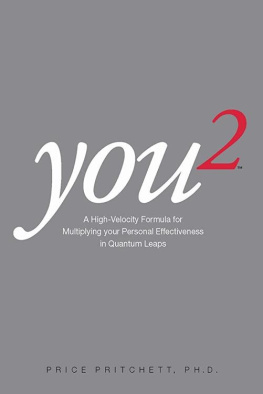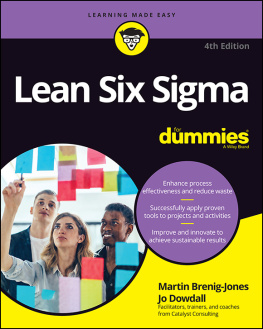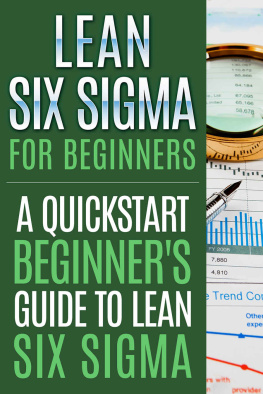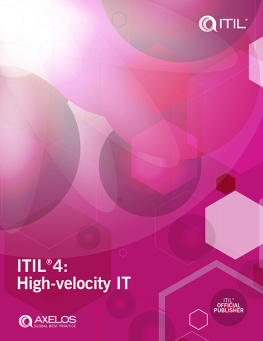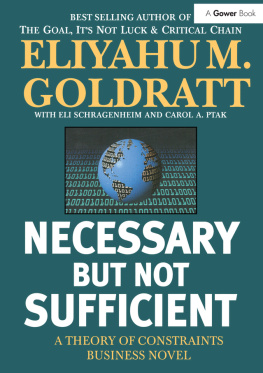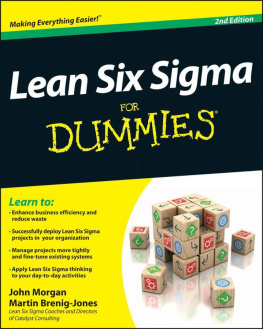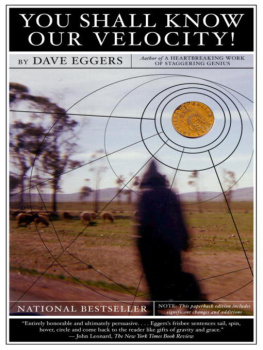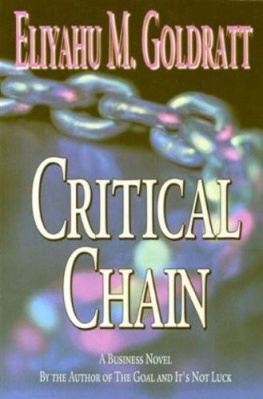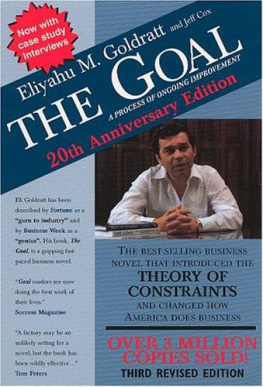About the Authors
Dee Jacob is managing partner of the AGI-Goldratt Institute. She has been a key innovator in the development of the VELOCITY approach, as well as in the Theory of Constraints (TOC) methodology and the TOC Project Management Solution. Since 1991, when she joined AGI, Dee has led many successful implementations of TOC for both private sector and government clients. She is a founder and lifetime member of the Theory of Constraints International Certification Organization and holds all six TOCICO certifications. A graduate of Lafayette College, Dee now lives in Guilford, Connecticut.
Suzan Bergland is an AGI-Goldratt Institute partner and is president of its North American Group. She has extensive, direct experience in applying the VELOCITY approach for integrating TOC and LSS with a wide range of clients. A founder and lifetime member of the Theory of Constraints International Certification Organization, she also holds all six TOCICO certifications, as well as three certifications from the American Society for Quality (ASQ). Suzan has a masters degree in quality management from Loyola University. She currently lives in Naples, Florida.
Jeff Cox is an independent creative writer who specializes in writing novels based on business concepts. He is the co-author or author of seven previous works of business fiction: The Goal, Zapp!, The Quadrant Solution, Heroz, The Venture, Selling the Wheel, and The Cure. These have sold millions of copies and have been translated into many languages worldwide. Jeff and his family live near Pittsburgh, Pennsylvania.
Acknowledgments
VELOCITY, as a concept and as a book, would not exist without the efforts of many brilliant people who came before us. W. Edwards Deming, Taiichi Ohno, Shigeo Shingo, Walter Shewhart, and so many others built a wonderful framework of techniques and disciplines for the AGI-Goldratt Institute to build upon.
In particular, the authors would would like to express our deep appreciation to Dr. Eliyahu Goldratt, who developed the Theory of Constraints, founded the AGI-Goldratt Institute, and authored The Goal with Jeff Cox, as well as many other books, to bring his thinking to the world. Without Elis genius, none of the work we do today would be possible.
In addition, this book ultimately reflects all of the hard work and motivation of the people of the AGI-Goldratt Institute to make complex systems manageable and to enable our clients to achieve self-sustaining success. Everyone at AGI feels tremendous gratitude toward the many clients and their organizations that have enabled us to continue the work we find so satisfying. Among these clients we are proud to have served are the United States Navy, the United States Marine Corps, and the United States Air Force, along with a vast array of business corporations that include Nike, Corning, Procter & Gamble, Sealed Air, ITT, Northrup Grumman, Lucent, Boeing, Lockheed Martin, Gunze, and Sumino.
Key people within AGI who were vital to developing the concept of VELOCITY and its various applications and tools are Dale Houle and Hugh Cole, fellow partners of Dee Jacob and Suzan Bergland. Dale has been essential to the vision, verbalization, and development of TOC since the founding of AGI. Hugh has been associated with AGI as a client first, then a consultant, and now as a partner for many years; he ensures that we make whatever we conceive understandable to all within the organization. Finally, our many consultants, our executives and partners, and our staff ensure that the story of VELOCITY occurs daily through those clients we engage with, mentor, and train.
A concept or an approach that works is not so easy to turn into a readable and engaging story. Jeff Cox is our special friend and collaborator on VELOCITY, the book. His books demonstrate not only the gift he has for conveying concepts to others, but the flair he has for making learning about business concepts easy through a story hard to put down until youve read the very last page. Working with Jeff has helped us to see further the elegance of what we do and how we touch lives every day. We thank you, Jeff, and look forward to our next collaboration.
Finally, we would like to thank those who made the publication of this book a reality. Most of all, we thank our agent, Cathy Hemming, whose experience and knowledge guided us to certainly one of the worlds finest publishers: Free Press of Simon & Schuster. There, we were happy and fortunate to work with Emily Loose, an editor blessed with both vision and sensitivity, and her greatly talented editorial staff. We, the authors, thank all of you and offer our best wishes for enduring success.
Introduction
Experienced managers know that nothing is static in the operating environment; over time there is change. The rate of change may be slow. It may be alarmingly fast (or seem that way to those caught by surprise). But change is forever occurring in markets, in technology, in methods, in processes, in skills, in regulations, and in everything else, including the art and practice of management itself. To cope with unending change and indeed to make the most of it the effective manager understands that the long-term success of the organization depends upon ongoing, progressive, positive adaptation what has come to be called continuous improvement.
Over recent decades, going back to the 1980s and earlier, there have been a number of organized efforts aimed at achieving continuous improvement, many of them becoming known by a three-letter acronym. There were TPS (Toyota Production System), TQM (Total Quality Management), SPC (Statistical Process Control), JIT (Just in Time), as well as many others. All of these, even those that fell by the wayside or were absorbed into other disciplines, had elements of value, with important concepts and useful tools and methods. Unfortunately, there were also flaws in the thinking that went into the implementation of these efforts, and sometimes in the very assumptions on which they were founded. As a result, most organizations, though they learned from these programs and disciplines, were never able to achieve the degree of sustained performance they expected.
When we talk about continuous improvement, a number of essential questions arise. For instance, what should be improved? Everything? That is, should we seek to improve everything throughout the entire organization? Many well-intentioned program managers, executives, and consultants would, indeed, say, Yes, we must improve everything, every function, every aspect of operations, from A to Z! As if to say, We must focus everywhere!
Yet its a serious question: should the management team seek to improve everything? All at once? Simultaneously? And continuously? What should be the scope of the improvement effort? Do you include every function? Every customer service and supplier interaction? What about housekeeping, accounting, and maintenance? And which resources do you include? If you include everything and everybody in any but the smallest of companies, youre into a massive undertaking. How do you organize it? More important, how do you make it effective?
Conversely, perhaps for obvious reasons of practicality and budget, suppose you do not seek to improve everything all at once. Then youre back to the original question: what do you improve? Where do you focus? By what criteria do you select your improvement initiatives and assign resources and tasks? Can you know in advance whether there is really going to be a bottom-line gain for all your trouble and investment?


